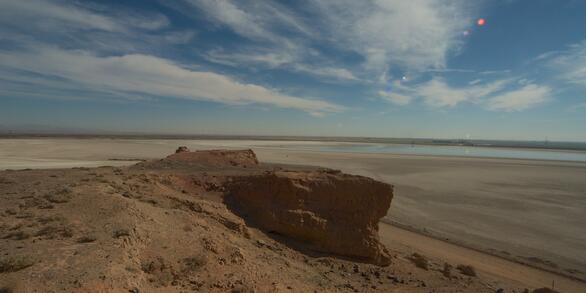Salton Sea
Changes in regional water management practices have reduced freshwater inflow to the Salton Sea, changing what was once a popular vacation destination to a shrinking hypersaline lake. As the lake bed dries to a dusty playa, air, water, and wildlife managers will depend on careful monitoring and research to inform critical decisions affecting the future of the lake and surrounding communities.
Geonarrative Investigates Geohazards of the Salton Sea
The geonarrative, “A Desert on the Move”, addresses the geohazards present in the Salton Sea area. Beneath the Salton Sea is a network of active tectonic faults some of which have produced some of the largest earthquakes in California’s history.
State of the Salton Sea Report

State of the Salton Sea 2017 Report
Summary from a 2014 workshop to review existing science and propose scientific studies and monitoring needs required for understanding how to retain the Salton Sea as a functional ecosystem. Click the link below to access the report.

